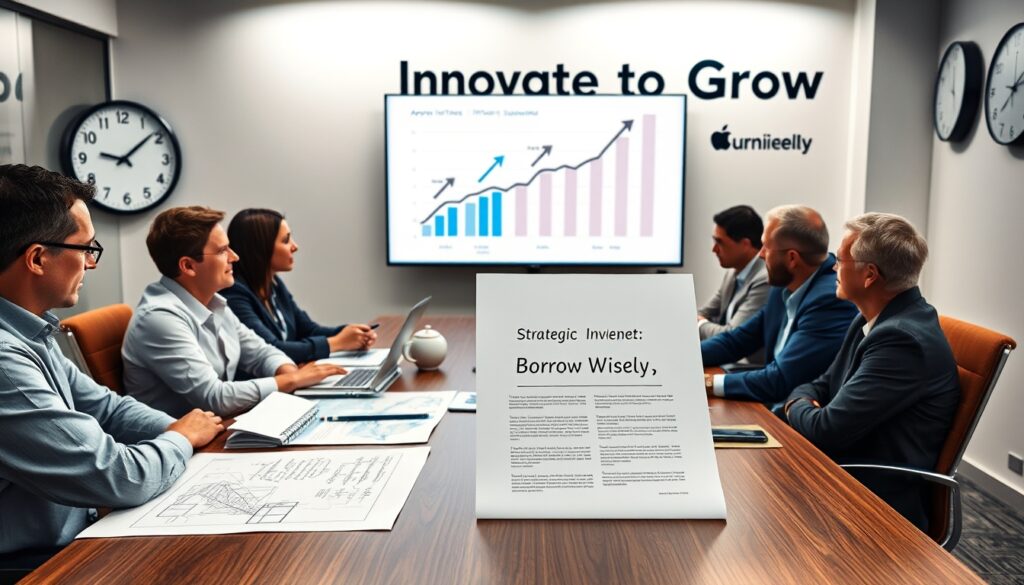
Starting a business is an exciting yet challenging journey, and since launching my company in 2020, I’ve experienced both highs and lows. Along the way, I’ve made my share of mistakes—some minor, others more significant—that have taught me invaluable lessons about business finance and sustainability. I’ve written this article to share those insights with new entrepreneurs entering the startup world. My goal is to help you avoid common pitfalls, make smarter financial decisions, and set a solid foundation for long-term success. By learning from my experiences, you can navigate the complex financial landscape with confidence and focus on growing your business.
After reflecting on the mistakes I made in my entrepreneurial journey, I decided to immerse myself in the lives of some of the most successful entrepreneurs in the world. Through this deep dive, I uncovered invaluable insights that have shaped their paths to success, helping me correct my own course. Now, I’m excited to share these lessons with you so that you can learn from the best and avoid the same pitfalls. Let’s get started on this journey of growth, inspired by the greatest business minds of our time.

Every business progresses through various stages of growth, and each phase demands distinct financial strategies. Understanding when to reinvest profits or seek external financing can make or break a business. In this guide, we’ll explore the critical stages where more financial resources are needed, offer a practical growth plan, and share insights from top business leaders like Warren Buffett, Elon Musk, Indra Nooyi, Ratan Tata, and Jeff Bezos on strategic borrowing. This article is designed to help your business grow while maintaining financial health.
Stages of Business Growth and Financial Needs
1. Startup Stage: Building the Foundation
Financial Needs: The startup phase requires a substantial amount of capital for product development, market research, legal setup, and early-stage marketing. Often, businesses must invest heavily in infrastructure to get their operations off the ground.

When to Take Loans: External funding sources such as venture capital, angel investors, or business startup loans are common at this stage. Entrepreneurs often need loans to turn their ideas into reality.
Example: Uber initially relied on venture capital to fund its technology platform and rapid market expansion, demonstrating the importance of external financing in scaling a new idea.
Key Lesson: Borrow only when it’s crucial to fund operations or launch your business. Ensure a clear path to profitability before taking on significant debt.
2. Growth/Expansion Stage: Scaling Operations
Financial Needs: As businesses grow, they require more capital to scale operations, hire employees, expand into new markets, and develop new products or services.

When to Take Loans: At this stage, businesses with a proven revenue model can strategically use loans to finance expansion efforts. Ensure the business has a strong cash flow to cover loan repayments.
Example: Tesla, during its growth phase, borrowed money to scale production and meet increasing demand for electric vehicles. This investment paid off as Tesla became a market leader.
Key Lesson: Borrowing can be an effective way to fund growth, but it’s essential to have a clear repayment plan tied to revenue generation.
3. Maturity Stage: Enhancing Efficiency and Diversifying
Financial Needs: Mature businesses typically enjoy steady revenues and may require finances to optimize operations, acquire competitors, or diversify their product offerings.
When to Take Loans: Loans should be used for strategic investments, such as acquisitions or product line diversification, rather than day-to-day operations. Mature businesses often rely on cash flow but may need loans for large-scale investments.
Example: Coca-Cola regularly borrowed money to acquire companies like Costa Coffee, diversifying its portfolio and expanding its reach beyond soft drinks.
Key Lesson: Take loans when they support strategic growth and ensure the business has enough revenue to comfortably service the debt.

4. Decline or Renewal Stage: Reinventing the Business
Financial Needs: If a business hits a plateau or starts declining, investments in innovation or restructuring are necessary. Finances might be needed to develop new products or enter new markets.
When to Take Loans: Caution is critical in this stage. Avoid borrowing unless there’s a well-defined turnaround plan. Ensure any loans taken will contribute to new revenue streams or help restructure operations.
Example: Apple, during its renewal phase, strategically invested in the development of the iPod and iPhone, which led to a massive turnaround and sustainable growth.

Key Lesson: Only borrow when you have a clear strategy for generating returns. Avoid over-leveraging in a downturn.
Insights from Business Leaders on Strategic Borrowing
1. Warren Buffett: Debt Aversion and Focus on Cash Flow
Warren Buffett, renowned for his debt-averse philosophy, emphasizes using internally generated funds over borrowing. His investment firm, Berkshire Hathaway, focuses on acquiring cash-generating businesses that require minimal debt.
Key Lesson: Only take a loan if it’s essential to grow the business and if the revenue it generates can cover the debt payments. Prioritize operating cash flow and self-fund growth where possible.
Example: Buffett once said, “I’ve seen more people fail because of liquor and leverage.” He encourages reinvesting profits rather than taking on unnecessary loans.

2. Elon Musk: Strategic Borrowing for Innovation
In contrast to Buffett, Elon Musk embraces strategic borrowing to fuel innovation. He took significant loans to fund research and development for companies like Tesla and SpaceX, betting on the long-term success of disruptive technologies.
Key Lesson: Take loans when the potential for innovation and future profits outweighs the risk. Musk’s success with Tesla and SpaceX demonstrates how well-placed loans can drive technological breakthroughs.
Example: In Tesla’s early days, Musk borrowed to develop electric vehicle technology, which later became the cornerstone of the company’s market leadership.
3. Indra Nooyi: Balancing Debt and Growth at PepsiCo
As former CEO of PepsiCo, Indra Nooyi used loans strategically to fund acquisitions like Tropicana and Quaker Oats while maintaining financial health by avoiding over-leveraging.
Key Lesson: Take loans for strategic acquisitions or growth but keep an eye on debt ratios to ensure long-term stability.
Example: Nooyi balanced PepsiCo’s borrowing for growth while maintaining a disciplined financial strategy, allowing the company to expand without taking excessive risks.
4. Ratan Tata: Responsible Borrowing for Sustainable Growth
Ratan Tata, former chairman of Tata Group, advocates responsible borrowing, ensuring loans are tied to projects with clear returns. His acquisition of Jaguar Land Rover (JLR) involved both equity and loans, but a careful strategy ensured long-term success.
Key Lesson: Only borrow when you have a solid plan for generating returns. Avoid loans for projects with unclear revenue streams.
Example: Despite initial financial pressure, Tata’s acquisition of JLR turned into a highly profitable move, reinforcing the importance of strategic borrowing.
5. Jeff Bezos: Reinvesting Profits to Scale Amazon
Amazon founder Jeff Bezos avoided debt during Amazon’s growth journey. Instead, he reinvested profits into expanding the business, focusing on long-term growth.
Key Lesson: If your business generates consistent profits, reinvest them into growth. This helps maintain financial independence and reduces reliance on external financing.
Example: Bezos used profits from Amazon’s early book sales to scale the platform into the global e-commerce giant it is today, without relying heavily on loans.

A Practical Growth Plan for Business
A strong financial strategy balances reinvesting profits with strategic borrowing. Here’s a growth plan to ensure financial sustainability.
1. Build a Strong Financial Foundation
- Cash Flow Management: Keep a firm handle on cash inflows and outflows to ensure liquidity for daily operations.
- Establish an Emergency Fund: Set aside 6-12 months of operating expenses to handle unexpected downturns.
2. Phase 1: Organic Growth (1–2 Years)
- Focus on Core Competencies: Reinvest profits into product development and improving customer experience.
Example: A small e-commerce startup reinvests profits into expanding product lines or enhancing its online platform.
3. Phase 2: Scale Operations (3–5 Years)
- Expand Market Reach: Take strategic loans if necessary to finance marketing and geographical expansion.
Example: A restaurant chain takes a loan to open new locations, with a clear plan for repaying the loan through increased customer demand.
4. Phase 3: Strategic Investments (5–10 Years)
- Diversify Revenue Streams: Use profits to diversify and borrow for large-scale investments only when there’s a clear ROI.
Example: Amazon diversified into cloud computing, creating new revenue streams with strategic reinvestment.
5. Phase 4: Maturity and Consolidation
- Maximize Efficiency: Invest in automation to reduce long-term costs and improve profitability.
6. Innovation for Longevity
- Continuous Investment in R&D: Allocate a portion of revenue to innovation, ensuring competitiveness.
Conclusion
Whether you follow the cautious approach of Warren Buffett or the bold innovation-driven strategies of Elon Musk, knowing when to take loans and how to use profits for growth is essential. A practical growth plan, combined with strategic borrowing, will ensure your business can thrive while maintaining financial stability. By aligning your financial strategy with your business’s stage of growth, you can achieve sustainable success in today’s competitive marketplace.ancial stability. Whether you’re taking the cautious path of Warren Buffett or the bold approach of Elon Musk, aligning your financial strategy with the stage of your business is key to sustainable growth.